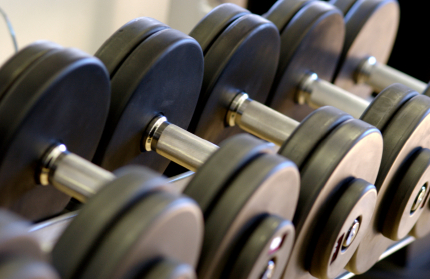Written by Lillian Reuman
Click here for PDF


A recent article1 in the New York Times (“Muscular Body Image Lures Boys Into Gym, and Obsession”) highlighted an underreported issue among adolescent boys: obsessive body image concerns regarding muscularity. This drive for muscularity is leading more young boys to linger at the weight racks, compulsively drink protein shakes, and experiment with steroids. Peppered with quotations, the article shared several anecdotes and references to a recent survey published in the journal Pediatrics. Many of these concerns map onto a very serious condition called muscle dysmorphia.
As discussed in an earlier post on our blog, muscle dysmorphia is a subtype of body dysmorphic disorder (BDD), in which individuals are obsessed with their muscularity and body tone. They fundamentally fear that they are “too scrawny” and subsequently engage in rituals to combat this anxiety. For example, individuals with muscle dysmorphia may spend an inordinate amount of time lifting weights at the gym and manipulate their diet to develop a “buff” body build. These behaviors may take a toll on relationships with friends and family as muscle dysmorphic patients typically seek reassurance and compare themselves to others, and may avoid social or school/work obligations if they interfere with their workout schedule.
With the forthcoming diagnostic manual (DSM 5), which entails a proposal to add muscle dysmorphia as a “specifier” to a BDD diagnosis, a recent flurry of empirical investigations2,3,4 has explored this potentially common, yet understudied disorder. Citing similar symptomology (e.g., body image dissatisfaction, excessive exercise), two reports have examined muscle dysmoprhia in relation to eating disorders such as anorexia nervosa and bulimia nervosa. Furthermore, researchers have been working to develop new measures and questionnaires that appropriately capture “muscle appearance satisfaction5” (in various languages6).
However, the relationship between muscle dysmorphia and other forms of BDD had received limited investigation. Future research – both within our clinic and elsewhere – will aim to better understand this putative overlap.
1.Quenqua, D. (November 19, 2012). Muscular Body Image Lures Boys Into Gym, and Obsession. The New York Times.
2.Murray, S. B., Rieger, E., Hildebrandt, T., Karlov, L., Russell, J., Boon, E., … & Touyz, S.W. (2012). A comparison of eating, exercise, shape, and weight related symptomatology in males with muscledysmorphiaand anorexia nervosa.Body Image, 9(2),193-200.
3.Murray, S. B., Maguire, S., Russell, J., & Touyz, S. W. (2012). European Eating Disorders Review, 20(1), 68-73.
4. Blashill, A. J. (2011). Gender roles, eating pathology, and body dissatisfaction in men: A meta-analysis. Body Image, 8, 1-11.
5. Mayville S. B., Williamson, D. A., White, M. A., Netemeyer, R. D., & Drab, D. L. (2002). Development of the Muscle Appearance Satisfaction Scale: A self-report measure for the assessment of muscle dysmorphia symptoms. Assessment, 9(4), 351–360.
6. González-Martí, I., Fernández Bustos, J.G., Contreras Jordán, O.R., & Mayville, S.B. (2012). Body Image, 9(4), 517-523.
©2012 Massachusetts General Hospital OCD and Related Disorders Program | Reprint only with permission


